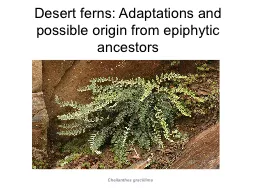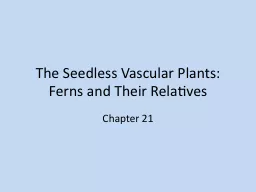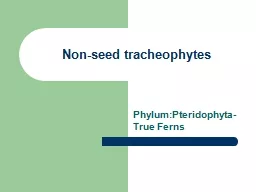PPT-Desert ferns: Adaptations and possible origin from epiphyti
Author : jane-oiler | Published Date : 2015-11-29
Cheilanthes gracillima What are the desert ferns Desert ferns often referred to as Cheilanthoids are all in the family Pteridium which includes 4 groups Adiantoids
Presentation Embed Code
Download Presentation
Download Presentation The PPT/PDF document "Desert ferns: Adaptations and possible o..." is the property of its rightful owner. Permission is granted to download and print the materials on this website for personal, non-commercial use only, and to display it on your personal computer provided you do not modify the materials and that you retain all copyright notices contained in the materials. By downloading content from our website, you accept the terms of this agreement.
Desert ferns: Adaptations and possible origin from epiphyti: Transcript
Download Rules Of Document
"Desert ferns: Adaptations and possible origin from epiphyti"The content belongs to its owner. You may download and print it for personal use, without modification, and keep all copyright notices. By downloading, you agree to these terms.
Related Documents














